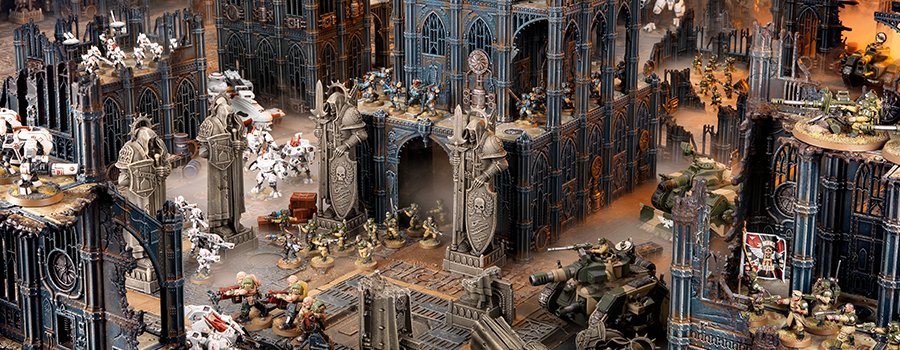
One of the most common refrains since the release of 9th edition has been: You need more terrain. This has been emphasized due to the increase killing power visible across the board, and the smaller board sizes making it harder to stay out of range. Indeed, with the release of the Ad-Mech book a lack of terrain has been cited as one of the reasons these armies have been doing well. After an event when players see a shooting skewed list do well one of the first questions is: what was the terrain like at this event? While I think appropriate terrain is very important in a competitive event, I really think people underestimate how adding terrain doesn’t balance the game it just favors different armies. Thus I think it important to look at not only the impact that terrain has on armies but also on player army selection.
Now, the reason I am writing this article may just be that I am still salty I lost an RTT to an opponent who properly used terrain to shield his army from my shooting. However, as I watched the armies that did well at this event I noticed how infantry-heavy they were. Since this event mainly used ruins (as almost everything else is almost useless at stopping shooting) infantry units or units that can fly become very valuable. Before I go further this isn’t a criticism of how the TO ran this event. The primary reason terrain exists these days is to stop the person who went first from shooting their opponent off the board. However by requiring a significant amount of terrain to mitigate the advantage of first turn you end up having to put down a lot of terrain. So if we say the question is: How do I prevent the player who goes first from being able to easily table his opponent then terrain is the clear answer.
The existence of a *certain army that relies on mobile units with fly that are allergic to shooting* is one of the complicating matters of this equation. When you increase the amount of terrain on a board you help these types of armies pick their battles and hide their pieces until they are ready to trade them. In fact, I would argue that a game played on a board with heavy terrain, the player who goes second has a massive advantage. These players can force their opponent to move out of hiding first and can respond defensibly while holding back for the bottom of round 5. Thus I think there needs to be a balance in considering the impact terrain has on a game and how it can still skew the advantage of the roll-off.
To be completely honest I don’t think there will ever be a perfect amount of terrain for a game. There is just too much variety in army rules, terrain availability and impact to come up with a perfectly logical number. I think that TOs should just embrace this and roll with an amount that seems reasonable for them and that this should be publicized beforehand. I would compare this to the game of Baseball where various teams can have stadiums with very different dimensions from one another. In some fields a fly ball is well within the bounds of play whereas a similarly hit ball in another is a home run. Even in other sporting venues such as American Football and Tennis you have environments that impact the pace and form of the game (grass vs turf vs clay etc.). While I think we can now unhelpfully shift the discussion to debating what is or is not a “reasonable amount of terrain” I still don’t think boards that favor shooting armies should be considered inferior to those that boost infantry or assault armies. Until we get terrain rules that reward more variety in terrain types and impacts TOs will have to decide which end of the spectrum they think is best and run with it.
And remember, Frontline Gaming sells gaming products at a discount, every day in their webcart!
